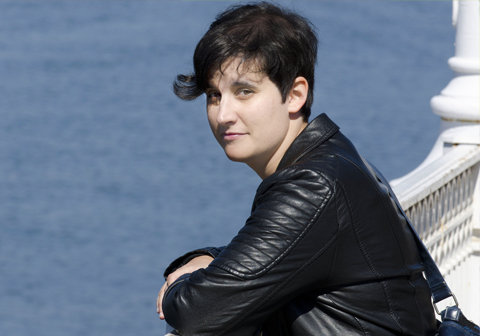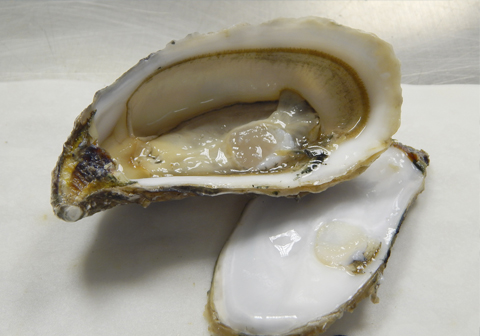Using oysters and mussels, researchers at the UPV/EHU's Faculty of Science and Technology and at the Plentzia Marine Station have studied the concentrations of silver and copper in the Ibaizabal, Oka and Gironde river estuaries and their effects. In the work, oysters were found to absorb larger concentrations of metal and therefore could be very useful in assessing the environmental situation of the estuaries.
Oysters are proving particularly useful in analysing the concentration of silver in estuaries
Researchers at the UPV/EHU-University of the Basque Country have used mussels and oysters to analyse the effect that could be caused by the increase in the concentration of silver in estuaries
First publication date: 18/04/2017

Human activity close to estuaries has exerted an influence on the balance in these environments: it has degraded them and altered the way they function naturally. Today, despite the fact that processes have been implemented to restore several estuaries in Europe, contaminants, such as metals, still appear in the waters and sediments. And silver and copper are particularly significant among the metals because of their toxicity and abundance. To study them all, bivalves (oysters and mussels) are used as observation organisms. "These creatures live in these locations, they are filters and cannot move; they are exposed to the contamination and accumulate it," explained Ane Rementería, the author of the work. In fact, this piece of research was started when it emerged that the concentration of silver had increased. "A research group at the University of Bordeaux saw that the oysters in the Gironde estuary had very high levels of silver and that they were accumulating a lot of silver. So bearing in mind that the Ibaizabal has also had a similar history –both have historically had high metal contamination- and that here, too, some research work had been carried out on mussels, etc., we decided to analyse the three estuaries (Gironde, Oka and Ibaizabal)," said Rementeria.
The results of the research showed that oysters are of particular interest in studying silver because they absorb larger amounts of this metal than mussels do. Ane Rementeria believes that the results obtained are opening up the way so that "the oysters in the Basque Country can be used more" to analyse the environmental situation of the estuaries. "Here, mussels are used the most for research purposes, whereas in France both mussels and oysters are used. Oysters have been used in particular in the Gironde estuary and we wanted to study that potential for use". The research also revealed that the Gironde animals have higher concentrations of metal, and that the combination of silver and copper leads to greater toxicity, in other words, it has an intensifying effect.
Biomarkers
A number of biomarkers were analysed to study all this. "When an organism is under the influence of contamination, it gives a measurable biological response, which could be an increase in a protein or the loss of some cells, and we measure that," explained Rementeria with respect to the information provided by biomarkers. To do this, they used the Integrative Biological Response (IBR) index. This tool "gathers all the data obtained and an overall perspective is achieved".
With the future in mind, the researcher highlighted the need to continue to further the subject: "It would be interesting to conduct more experiments over longer periods of time to properly understand what is taking place in these animals when they are under the effects of silver and copper."
Additional information
This study was conducted as part of the PhD thesis of the researcher Ane Rementeria-Ugalde (Algorta, 1987). Her thesis is entitled Understanding the impact of silver as an emerging contaminant in the Ibaizabal and Gironde Estuaries and was written up at the UPV/EHU's Marine Station in Plentzia and the University of Bordeaux. Her thesis supervisors were Beñar Zaldibar, an associate lecturer at the UPV/EHU, and Jörg Schafer, a tenured lecturer at the University of Bordeaux.



